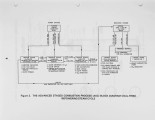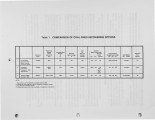| Title |
Staged Fluidized-Bed Coal Combustor for Boiler Retrofit |
| Creator |
Rehmat, Amir; Dorfman, Lev; Shibayama, George; Waibel, Richard T. |
| Publisher |
University of Utah |
| Date |
1991 |
| Spatial Coverage |
presented at Honolulu, Hawaii |
| Abstract |
The Advanced Staged Fluidized-Bed Coal Combustion System (ASC) is a novel clean coal technology for either coal-fired repowering of existing boilers or for incremental power generation using combined-cycle gas turbines. This new technology combines staged combustion for gaseous emission control, in-situ sulfur capture, and . an ash agglomeration/vitrification process for the agglomeration/vitrification of ash and spent sorbent, thus rendering solid waste environmentally benign. The market for ASC is expected to be for clean coal-fired repowering of generating units up to 250 MW, especially for units where space is limited. The expected tightening of the environmental requirements on leachable solids residue by-products could considerably increase the marketability for ASC. ASC consists of modular low-pressure vessels in which coal is partially combusted and gasified using stacked fluidized-bed processes to produce low-tomedium-Btu, high-temperature gas. This relatively clean fuel gas is used to repower/refuel existing pulverized-coal, natural gas, or oil-fired boilers using bottom firing and reburning techniques. The benefits of ASC coal-fired repowering include the ability to repower boilers without obtaining additional space while meeting the more stringent environmental requirements of the future. Low NOx, SOx, and particulate levels are expected while a nonleachable solid residue with trace metal encapsulation is produced . ASC also minimizes boiler modification and life-extension expenditures. Repowered efficiencies can be restored to the initial operating plant efficiency, and the existing boiler capacity can be increased by 10%. Preliminary cost estimates indicate that ASC will have up to a $250/kW capital cost advantage over existing coal-fired repowering options. |
| Type |
Text |
| Format |
application/pdf |
| Language |
eng |
| Rights |
This material may be protected by copyright. Permission required for use in any form. For further information please contact the American Flame Research Committee. |
| Conversion Specifications |
Original scanned with Canon EOS-1Ds Mark II, 16.7 megapixel digital camera and saved as 400 ppi uncompressed TIFF, 16 bit depth. |
| Scanning Technician |
Cliodhna Davis |
| ARK |
ark:/87278/s67p91zz |
| Setname |
uu_afrc |
| ID |
6804 |
| Reference URL |
https://collections.lib.utah.edu/ark:/87278/s67p91zz |
























